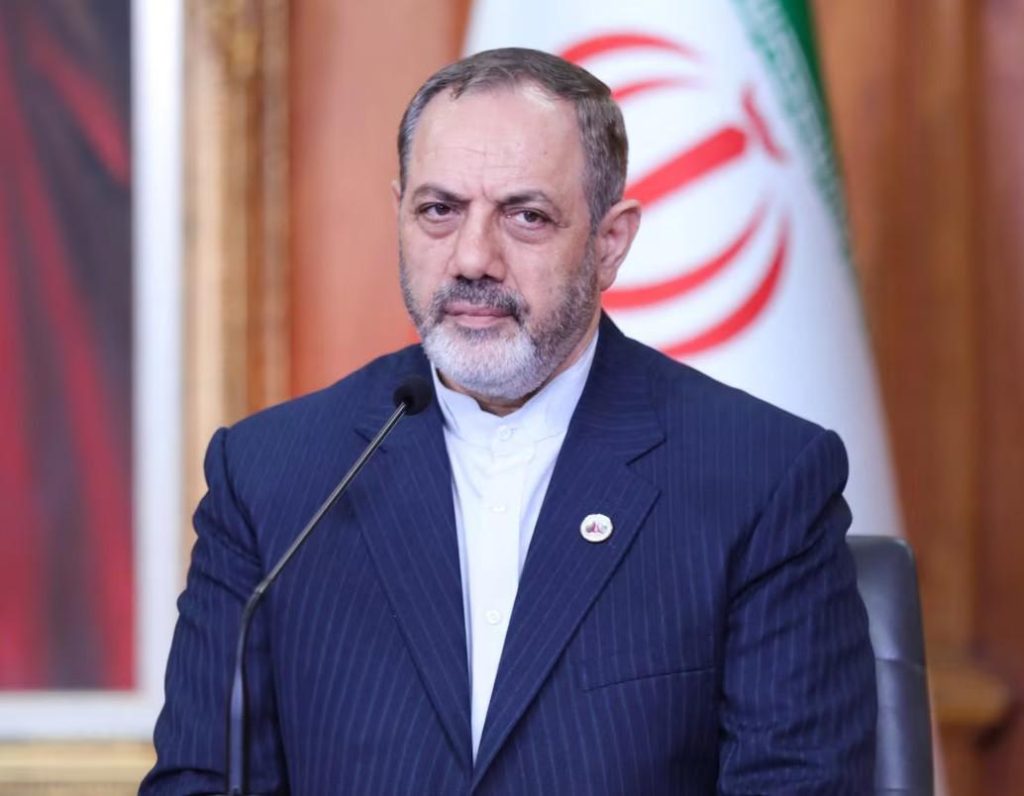
Will Strike US Bases in Region If Military Conflict Arises: Iran
Tensions between Iran and the United States have been escalating in recent years, with the two nations engaging in a series of confrontations and sanctions. Now, the Iranian Defence Minister has issued a stark warning, stating that Iran will strike American bases in the region if nuclear negotiations fail and military conflict arises with the US.
Speaking during a press conference, Defence Minister Aziz Nasirzadeh said, “All US bases are within our reach and we will boldly target them in host countries.” His remarks came ahead of the planned sixth round of Iran-US nuclear talks, which have been ongoing since April 2025.
Nasirzadeh’s comments are a clear indication of the Iranian government’s determination to defend its interests, even in the face of increasing pressure from the US. The US has been pressing Iran to agree to stricter limits on its nuclear program, as well as to curb its ballistic missile development and support for proxy groups in the region.
In response, Iran has been steadily increasing its military capabilities, including its missile program. The country has also been expanding its relations with other nations, including China and Russia, which have been critical of US policy towards Iran.
The threat to strike US bases in the region is a serious one, given the extensive presence of American military personnel and infrastructure in the region. The US has a significant military presence in countries such as Qatar, Kuwait, and the United Arab Emirates, which are all within striking distance of Iran.
Iran’s military capabilities have been significantly enhanced in recent years, thanks in part to its ballistic missile program. The country has developed a range of missiles, including the Qadr-H and the Zolfaghar, which have a range of over 2,000 kilometers. This has allowed Iran to target US bases and military assets in the region, as well as to deter potential attacks from the US.
The US has been trying to persuade Iran to agree to a nuclear deal, which would limit its nuclear program in exchange for relief from economic sanctions. However, Iran has been resistant to these demands, and has instead been pushing for a more comprehensive agreement that would address its security concerns and restore its economic and political sovereignty.
The nuclear talks have been going on for months, with little progress being made. The US has been pushing for a deal that would limit Iran’s nuclear program to enrichment levels of 3.67%, which is significantly lower than the current limit of 5%. Iran has been refusing to agree to this, citing its right to enrich uranium for peaceful purposes.
The standoff has led to increased tensions between the two nations, with both sides engaging in a series of confrontations and sanctions. The US has been imposing economic sanctions on Iran, while Iran has been conducting military exercises and testing ballistic missiles.
The situation is now at a critical juncture, with the threat of military conflict looming large. The US has been trying to persuade Iran to agree to a deal, but Iran is refusing to back down. The situation is likely to remain tense in the coming weeks, with both sides digging in their heels.
In the meantime, the region is bracing for the possibility of military conflict. The US has been deploying military assets to the region, including aircraft carriers and fighter jets. Iran has also been conducting military exercises and testing ballistic missiles.
The situation is complex and volatile, with the potential for conflict escalating rapidly. The US and Iran are locked in a game of brinksmanship, with neither side willing to back down. The outcome is far from certain, but one thing is clear: the region is on the brink of a major crisis.



